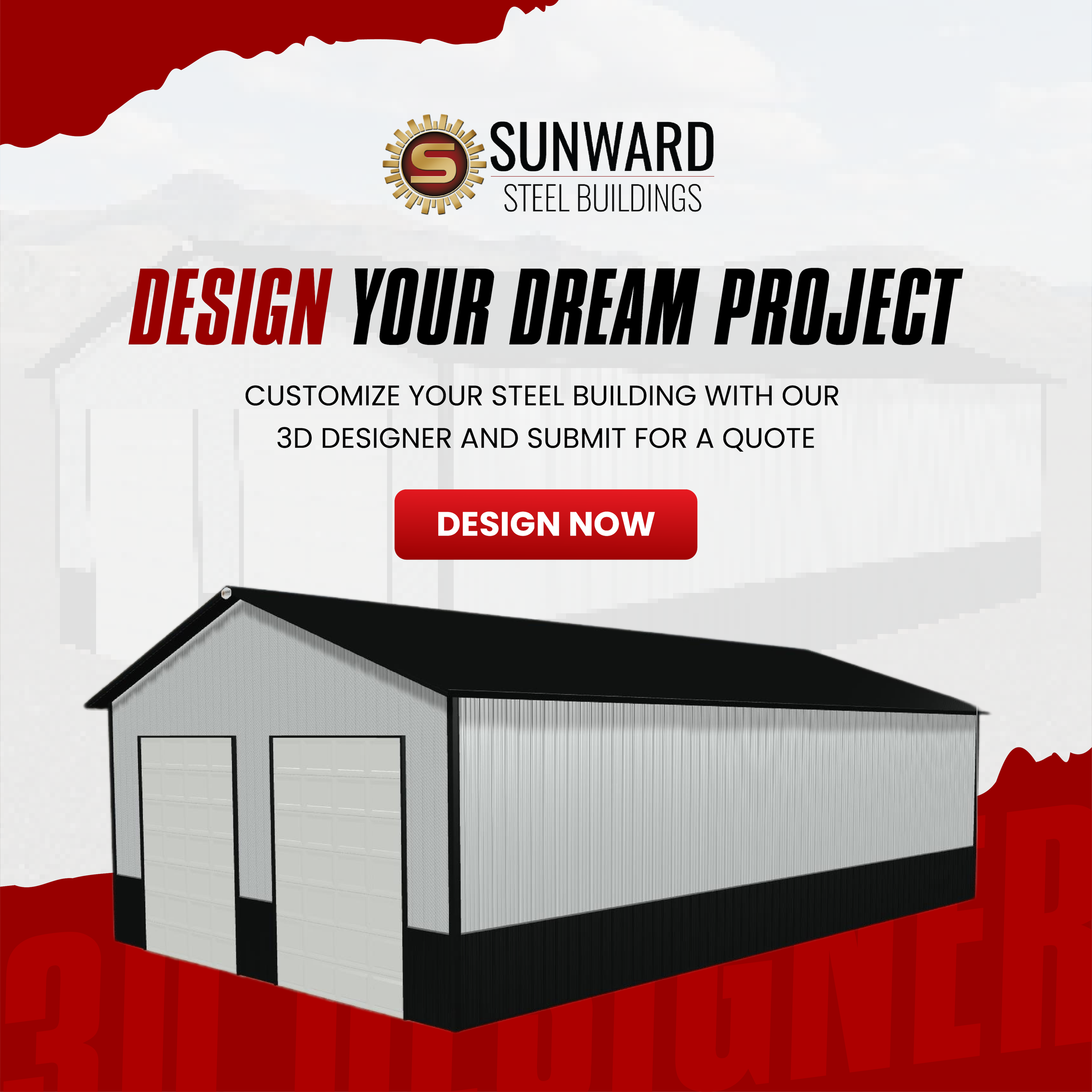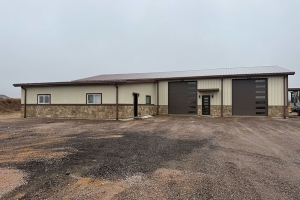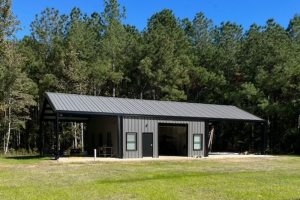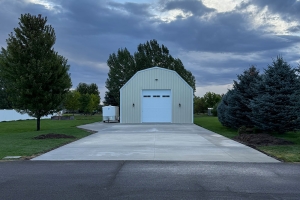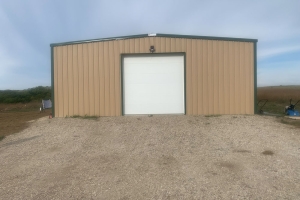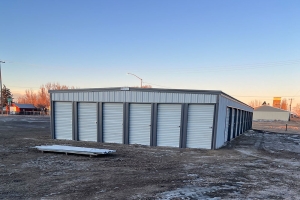Green Building Principles: How Steel Can Support The Goal
October 31, 2025 | Green Buildings
Sustainable practices have become a natural part of modern life, showing up in how energy is used, how products are manufactured, and, increasingly, how buildings are constructed. As environmental concerns grow, the demand for materials that support long-term resilience and responsible resource use has followed.
Steel, often chosen for its strength and longevity, is also gaining attention for its role in supporting environmentally conscious construction. From manufacturing to reuse, it offers several characteristics that make it compatible with green building principles.
Defining Green Building And Its Impact In The Construction Industry
Green building is shaping the future of construction by promoting approaches that minimize environmental harm, enhance energy efficiency, and support occupant well-being. Its importance has grown in step with rising urban density, climate concerns, and the call for more responsible infrastructure.
Steel fits into this movement through:
- Efficient resource use: Prefabricated steel structures reduce excess material and shorten construction timelines.
- Durability: Steel’s resilience reduces the need for frequent repairs or rebuilds, lowering long-term environmental costs.
- Recyclability: Steel can be recycled multiple times without degrading its structural properties.
As the construction industry seeks to lower its carbon footprint even further, attention has shifted not only to how steel is used, but also to how it’s made. This has led to the development of green steel, a cleaner alternative produced using low-emission technologies such as hydrogen-based reduction or renewable-powered electric arc furnaces instead of conventional coal-fired production.
Green steel reflects an industry-wide effort to reduce emissions at the production stage, aligning material sourcing with the same sustainability goals that drive green building design. For any project you’re considering, understanding these materials and how they’re produced can help align your choices with broader sustainability goals.
Core Principles Of Using “Green Steel” For Sustainability
Reducing the environmental impact of construction goes beyond energy-efficient designs—it starts with selecting materials that support long-term sustainability. Green buildings aim to minimize resource consumption, emissions, and waste from the ground up, and steel is playing an increasingly central role in that effort.
Green steel strengthens this role by tackling emissions at the manufacturing level. It’s produced using low-carbon methods that help shrink the overall footprint of a building project before construction even begins. This makes it a valuable component of a truly sustainable approach, particularly as expectations regarding climate responsibility continue to rise in the building sector.
Here are the core principles that guide the use of green steel in support of environmentally conscious construction:
Energy Efficiency
One of the key benefits of green steel in construction is its support for energy-efficient building strategies. Its structural adaptability makes it easy to integrate features that limit energy use, reduce emissions, and promote year-round thermal comfort.
From insulation to renewable integration, here’s how green steel supports energy-efficient construction:
- Thermal performance optimization: Pre-engineered steel systems enable precise insulation placement, reducing heat loss in winter and heat gain in summer.
- Solar integration ready: Steel rooftops offer a strong, uniform surface for mounting solar panels, facilitating the easy implementation of renewable energy systems.
- Tight building envelopes: Prefabricated components support airtight construction, reducing air leakage and easing the load on HVAC systems.
Indoor Environmental Quality
Sustainable buildings do more than conserve resources—they create safer, healthier indoor spaces for the people who use them. When designed with indoor environmental quality (IEQ) in mind, steel buildings can help improve air quality, enhance daylight access, and support overall occupant comfort.
Green steel plays a role by reducing pollutants at the manufacturing stage, which limits the potential for indoor contamination when materials are brought on-site. Combined with thoughtful building design, it helps create environments that support both performance and well-being.
Ways green steel supports indoor environmental quality include:
- Low-emission materials: Cleaner production processes minimize toxic byproducts, thereby reducing the risks associated with indoor air pollution and off-gassing.
- Moisture and mold resistance: Steel does not absorb moisture like wood, which helps prevent mold growth and protects indoor air from allergens and irritants.
- Daylighting and ventilation flexibility: Steel’s ability to span wide spaces supports open layouts, making it easier to integrate natural light and airflow into your design.
Embodied Carbon And Lifecycle Assessment
Understanding a building’s total environmental footprint means looking beyond energy bills and insulation. Embodied carbon accounts for the greenhouse gas emissions tied to material extraction, production, transportation, and installation—everything it takes to get a structure built.
Lifecycle assessment (LCA) tools are now widely used to measure these impacts. They evaluate how building materials perform from manufacturing to end-of-life. Green steel performs well in these models because it’s made using cleaner technologies and supports long-term reuse without degradation.
The following is what sets green steel apart in LCA evaluations:
- Lower cradle-to-gate emissions: Green steel reduces carbon output during production, which directly lowers your building’s embodied carbon score from the outset.
- Transparent environmental data: Many green steel products are accompanied by Environmental Product Declarations (EPDs), enabling you to make informed decisions based on verified data.
- Lifecycle performance alignment: Steel’s long service life and high recyclability align with the goals of circular construction, reducing the need for carbon-intensive replacements or repairs.
Material Sustainability
Sustainable construction depends on materials that perform well while limiting long-term environmental impact. Green steel supports this goal by reducing emissions during production and allowing for efficient use and reuse throughout its lifecycle.
Even in smaller builds, steel’s sustainability benefits show up in measurable ways:
- Resource efficiency: Precision manufacturing and prefabrication help minimize raw material waste during production and on-site assembly.
- Reuse and recovery potential: Steel can be reclaimed and recycled repeatedly without compromising its quality, thereby supporting circular construction practices.
Why Steel Fits Sustainable Design Goals
Every building material carries an environmental cost, from its sourcing to its performance over time. In the past, construction relied heavily on timber, brick, and concrete—materials that often require extensive raw extraction, consume high amounts of energy, or produce long-lasting waste. As environmental expectations rise, these traditional options are facing increased scrutiny.
Modern construction demands materials that balance strength, efficiency, and sustainability. This is where steel stands out. Unlike materials that deplete limited resources or degrade quickly, steel offers durability with a lower environmental footprint, especially when produced and used responsibly.
The following are a few examples demonstrating why steel is a smart choice for sustainable design:
- Recycled content: Steel is one of the most recycled materials in the world, often made with high percentages of scrap metal. This reduces reliance on virgin resources and diverts waste from landfills.
- Reusability: Structural steel components can be disassembled and reused in other projects, extending their lifecycle and supporting circular building practices.
- Durability over time: Steel resists rot, pests, and weather-related decay, resulting in fewer replacements and repairs throughout the building’s lifespan.
- Support for low-carbon goals: Green steel production methods are advancing rapidly, helping reduce emissions at the manufacturing level without compromising performance.
When your project calls for materials that perform reliably while aligning with long-term environmental goals, steel offers a practical and proven solution.
Aligning With Major Green Building Certifications And Standards
Green building certifications are designed to evaluate a structure’s performance in terms of energy use, material selection, indoor air quality, and overall sustainability. Choosing the right materials—like responsibly produced steel—can significantly contribute to your building’s eligibility and score under these programs.
Sunward Steel buildings are engineered to reduce waste, support energy efficiency, and enhance occupant comfort—all key pillars across major certification systems.
- LEED (Leadership in Energy and Environmental Design): Developed by the U.S. Green Building Council, LEED rewards the use of recycled materials, energy-saving design, and low-waste construction. Sunward’s steel buildings support LEED credits through:
- High recycled content and minimal jobsite waste.
- Energy-efficient insulation and solar integration options.
- Flexibility to incorporate innovation and custom sustainability strategies.
- High recycled content and minimal jobsite waste.
- Green Globes: Managed by the Green Building Initiative, Green Globes takes a holistic view of sustainability throughout the entire lifecycle of a project. Sunward buildings align with Green Globes standards by offering:
- Precision prefabrication that reduces waste and resource consumption.
- Long-lasting steel components that support lifecycle performance goals.
- Compatibility with low-emission manufacturing practices.
- Precision prefabrication that reduces waste and resource consumption.
- WELL Building Standard: Focused on health and wellness, the WELL Building Standard emphasizes air quality, light, and moisture control. Steel buildings can support these standards by:
- Avoiding off-gassing and mold, thanks to moisture-resistant materials.
- Enabling natural light and ventilation through wide, open spans.
- Supporting a cleaner indoor environment with reduced airborne contaminants.
- Avoiding off-gassing and mold, thanks to moisture-resistant materials.
These certifications all reward thoughtful material choices. With steel, you’re not only building something durable—you’re building something that can help meet today’s environmental and wellness benchmarks.
Sustainable Designs That Meet Green Building Certifications
Incorporating sustainable features into your building’s design, construction, and operation isn’t just good for the environment—it directly supports compliance with leading green building certifications, such as LEED, Green Globes, and WELL. The performance of a building is evaluated across energy use, occupant health, and environmental impact, and steel buildings offer the flexibility to meet or exceed these criteria.
Sunward Steel buildings are designed to accommodate a wide range of green features that contribute to higher certification scores and long-term performance benefits.
- High-performance insulation: Properly installed insulation reduces heating and cooling demand, helping lower energy consumption. This supports energy performance credits in LEED and Green Globes systems.
- Cool roofs and reflective coatings: Roofing systems with reflective finishes can reduce surface temperatures and mitigate urban heat island effects, earning points in the LEED for Sustainable Sites and Energy & Atmosphere categories.
- Ventilation and natural lighting: Wide-span steel framing facilitates the incorporation of skylights, clerestories, and passive ventilation systems, all of which enhance indoor environmental quality and contribute to WELL and LEED credits.
- Thermal breaks and energy modeling: Thermal breaks reduce conductive heat transfer, improving overall energy performance. Combined with predictive energy modeling, they help demonstrate compliance with performance thresholds required by multiple certification frameworks.
By integrating these design strategies early in the planning process, you position your steel building for greater efficiency, lower operating costs, and stronger alignment with sustainability goals.
How Prefab Steel Buildings Can Be Designed To Achieve Green Certifications
Prefabricated steel buildings offer more than speed and strength—they provide a reliable framework for meeting modern sustainability goals. When designed with green building certifications in mind, these structures can be optimized to minimize environmental impact, enhance energy efficiency, and foster long-term resilience.
At Sunward Steel, every building is engineered with precision and purpose, so you can meet certification benchmarks without compromising on function, safety, or future flexibility.
- Faster construction: Prefabrication reduces time spent on-site, which lowers emissions from equipment use and minimizes construction waste. This supports credits under LEED’s Construction Activity Pollution Prevention and Green Globes’ Project Management categories.
- Extended lifespan with minimal maintenance: Steel buildings resist rust, mold, pests, and rot, delivering long-term performance with minimal need for repairs. This durability supports lifecycle performance metrics commonly found in Green Globes and LEED certifications.
- Enhanced safety and structural integrity: Engineered steel components meet rigorous safety and fire-resistance standards. Durable framing contributes to resilience goals and helps maintain certification status over time.
- Flexible design for future expansion: Prefab steel systems can be designed with adaptability in mind, allowing for efficient expansions or retrofits. This aligns with WELL and LEED goals for long-term use and reduced material waste.
These advantages make prefab steel buildings a strategic choice for projects pursuing environmental certifications, offering both immediate compliance and lasting value.
Explore Prefabricated Steel Buildings With Sunward Steel Buildings
Modular construction has become a cornerstone of sustainable building, offering greater control over materials, minimizing on-site waste, and accelerating timelines without compromising quality. Prefabricated steel buildings are particularly well-suited for meeting green certification goals because they combine durability, efficiency, and long-term adaptability in a single, cohesive system.
At Sunward Steel Buildings, we’ve been delivering precision-engineered steel structures since 1972. With more than 75,000 buildings completed worldwide, we understand the importance of aligning performance with sustainability. Our prefabricated systems are designed to meet modern environmental standards while offering the flexibility needed for future expansions or evolving operational needs.
Whether you’re aiming for LEED, Green Globes, or WELL certification—or simply looking to build smarter—our team is here to help guide your project from the planning phase through construction. With decades of experience and a commitment to lasting quality, we’re proud to support your sustainability goals with solutions designed to perform for generations.
Build Your Sustainable Prefabricated Steel Building With Us
Sustainable construction isn’t just about meeting environmental targets—it’s about building smarter, longer-lasting spaces that serve your needs for decades to come. With prefabricated steel, you get a material that’s strong, recyclable, and adaptable, while also supporting the design flexibility and energy efficiency that modern certifications demand.
At Sunward Steel Buildings, we don’t just supply steel; we help you bring your vision to life with expert guidance every step of the way. From reducing material waste to optimizing energy performance, our buildings are engineered with sustainability at their core.
Whether you’re just beginning the planning process or ready to break ground, we’re here to ensure your building meets today’s standards and tomorrow’s expectations.
Ready to build green? Explore steel building types from Sunward Steel and find the perfect sustainable solution for your next project.

